Hearing and Seeing Huxiang - the Exhibition of Hunan Musical Relics

Introduction
Hearing and Seeing Huxiang - the Exhibition of Hunan Musical Relics
Foreword
Music is the forerunner of civilization, nourishes the childhood of human beings, and carries the future of the nation. Hunan is located in the middle reaches of the Yangtze River, south of Dongting, and is one of the important cradles of Chinese civilization. The landscapes in Hunan are gorgeous, everything is vigorous, and rivers flows for ages, nurturing unique and rich musical culture.
More than 6,000 years ago, the sounds of ancient musical instruments(stone whistles, pottery balls and pottery drums) flied on the Liyang Plain, accompanied by the joy of work; on the banks of the Weishui River, resounding with the sound of Nao of the Shang and Zhou Dynasties; on the banks of the Miluo River, the sorrow of Quyuan echoed; various types of musical performances acted in the Han and Jin Dynasties; exotic music prospered in the Sui, Tang, Song and Yuan Dynasties; ancient music of Liuyang opened a new chapter in ritual music culture.
Music is the common language of all mankind, thousands of years have passed, can these silent notes in history be awakened again today? Listen,the sound of Huxiang—the most beautiful language, either whispered or chirped, soothing or abrupt, soft or strong, deep or distant, tells the longing and call of the ancestors of Huxiang for a better life. Let us start a wonderful audio-visual journey in this eternal and beautiful music world!
Chapter One
In the late Shang and the early Zhou Dynasties, local artisans in Hunan, a region influenced by the Shang culture of the Central Plains, created a large bronze musical instrument-Nao. The further development of bronze instruments such as Nao, Zhong, and Bo, and the determination of two-tone effect, laid the foundation for the ritual music culture of the Zhou Dynasty.
Chapter Two
From the mid-Spring and Autumn Period to the Warring States Period, Hunan was incorporated into the territory of Chu(State), and its music culture showed the solemn and profound, romantic and sentimental beauty of Chu tunes, including the ritual music needed to maintain the ritual system, as well as the folk music to release the mind, and the verses of Chu, which not only pleased people, but also entertained the gods. The diversity of musical instruments has also foster the "Eight-Tone Harmony" musical performance form, which constituted the grandeur of Chu’s music and dance.
Chapter Three
Since the Qin and Han Dynasties, Hunan has become an important part of China's unified multi-ethnic country, and many material relics of musical culture have been left throughout the ages. During the period of the Han, Wei and Jin Dynasties, the traditional Chinese music form changed from the ritual music to the dance music, and a large number of excavated objects and portrait bricks and stone reliefs of Han Dynasty showed various types of musical performances that combined instrumental music, singing and dancing, acrobatic and other art forms at that time, reflecting time features of people’s pursuit of high-quality and joyful life.
Chapter Four
The Tang Dynasty saw unprecedented prosperity in culture and art, with unprecedented development in dance music, especially court ·music, and the exotic style was also spread to the land of Hunan. From the late Tang Dynasty to the Song Dynasty, the music of the literati became unique, and the entertainment culture of the citizens also flourished, especially during the Yuan and Song Dynasties, the dramas were popular throughout the country. The musical relics unearthed in Hunan reflected the flourishing musical art achievements of this period under the heyday of national unification.
Chapter Five
Since the Ming and Qing Dynasties, Huxiang music has entered a new stage of historical development, people of civil and military ability could express their political aspirations through music, conveying their sentiments of governing the world and saving the country, as well as their desire to survive and innovate. In addition, there is music of the ethnic groups, which is cheerful and joyful, commemorates the spirits of the ancestors, and encourages production.The "Ding Festival" at the Wenmiao Temple in Liuyang is a direct testimony to the traditional culture of respecting Confucianism, and highlights the magnificent music of Hunan.
Last Chapter
Gathering together, on the shore of Hunan, the ancient music is still in the ears, and the familiar melody comes out naturally. Ancient poetry and paintings are displayed, the music is melodious and acclaimed...
Highlights
- 陶球3件
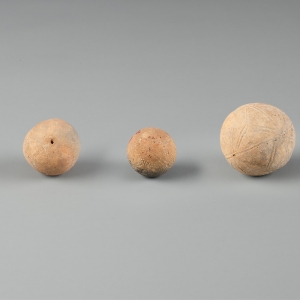
- 陶鼓
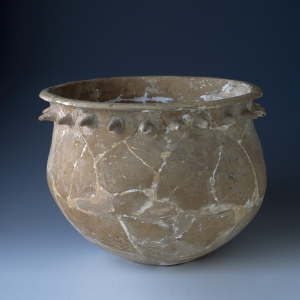
- 象纹铜铙

- 宁乡北峰滩兽面纹大铙
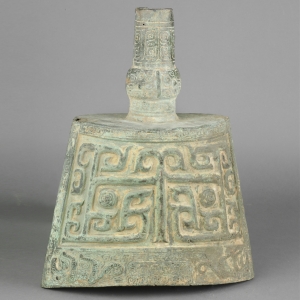
- 虎纹铜铙
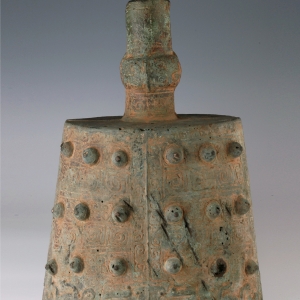
- 云纹铜铙

- 云雷纹铙
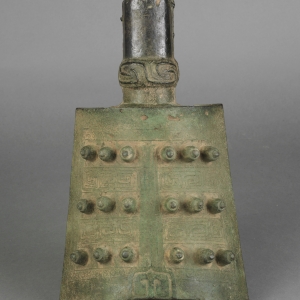
- 猪磬

- 四虎镈
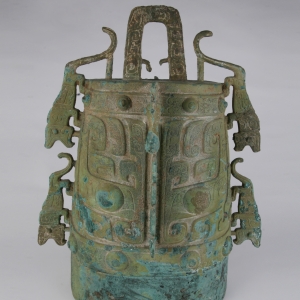
- 士父铜钟

- 青铜铎

- 战国(公元前475—前221年)通高30.3、甬长10.5厘米 湖南省博物馆藏See More




